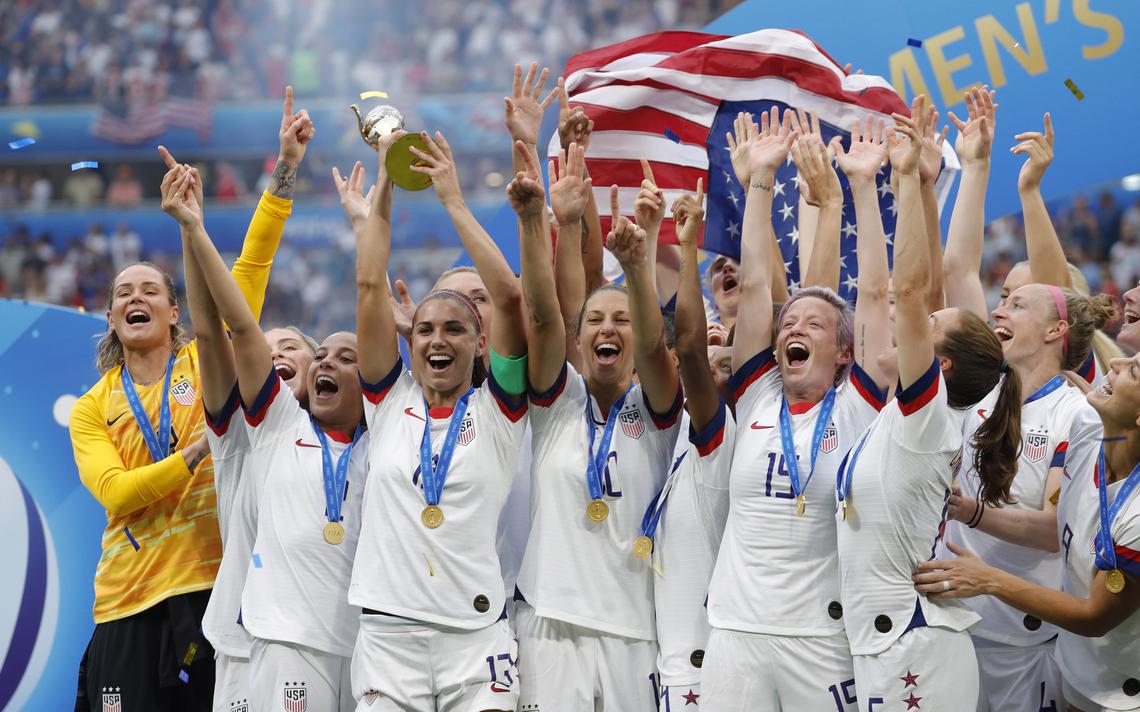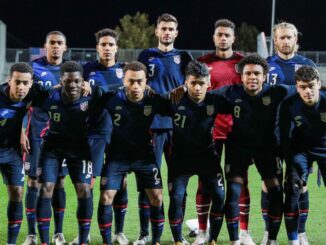
With the Women’s World Cup squarely in the rear view mirror, and the Portland Thorns solidly in first place fresh off a resounding 5-0 thrashing of the Houston Dash, I’ve been wondering, and discussing among friends, why the excitement over women’s sports drastically diminishes each time the Women’s World Cup ends.
The fervor over the World Cup was palpable. It seemed like everyone I managed to share a text with at that time was watching some game or another. I watched the final in the guest lodge at Crystal Crane Hot Springs outside Burns, Oregon (literally nowheresville) with a group of other aficionados. It was amazing we could get the game at this beautiful hot springs miles from civilization, and even more amazing that my wife and I weren’t the only ones interested in watching.
It’s so heartening to see and feel the interest in women’s athletics every four years when the World Cup commences, and so mysterious that this interest subsequently, and quite suddenly, fades away. While the WNBA and NWSL are going strong, it’s a rare moment that either league comes up in conversation (among men anyway). Yet when the Women’s World Cup is in full bloom, men and women alike sit alert, in rapture, glued to the screen, cheering on their nation.
The waning of attention that follows the Women’s World Cup needs to be remedied, it seems to me, for female athletes to earn the equal pay, for instance, they so admirably fight for and indisputably deserve. How can interest in female athletics be maintained nationally more regularly? Why are the Olympics and the Women’s World Cup (occurring every four years, respectively) the only time female athletes garner the kind of attention they should always have – on par with, even exceeding, that of men?
To put in my own time and effort in this regard, I decided to pick up Gwendolyn Oxenham’s 2017 book of essays Under the Lights and in the Dark: Untold Stories of Women’s Soccer.
Oxenham played Division I soccer at Duke and went on to earn her MFA from Notre Dame. This rare combination of athletic prowess and writing acuity gives Oxenham a leg up on the stories she yearns to tell, and she proves totally up to the task.
But the book is more than a slew of unbelievable tales of female athletic perseverance in the face of unimaginable circumstances (though it is surely full of that). Under the Lights brings up the confounding nature of intermittent interest in female soccer, and Oxenham offers the occasional suggestion as to how to move forward.
The final essay in the book (“Rose City ‘Til I Die”), for instance, and of specific and revealing interest to those of us in the Northwest, is all about the Portland Thorns and how blessedly, inspiringly they are able to maintain a rabid fan base through thick and thin.
While to those of us living in Portland, Oxenham’s depictions of our city read somewhat exotic, focusing only on that which seems anomalous to other cities (Oxenham even admits to wanting to drink the Portland “Kool-Aid”), her insider access to Thorns’ fan culture is revelatory. She traces the history of the Rose City Riveters and also suggests that a centralized stadium location, a shared organizational infrastructure with the Timbers, and the longstanding tradition of success for the University of Portland women’s soccer team all contribute to the sustained devotee base of the Thorns.
Yet Oxenham remains in awe that this kind of rabid culture can exist around a professional women’s team, and I felt while reading Oxenham’s book that to live in this city, which fosters this devotion to its female soccer team in a variety of grassroots and subsidized ways, is, in this regard, truly remarkable and something to be proud of.
“The Portland Thorns is the Promised Land of women’s soccer,” Oxenham writes. “Playing in the stadium is on each player’s things-to-do-before-I-die list; it’s the pie in the sky.”
While this final essay of Oxenham’s book is clearly the cherry on the icing for any Thorns fan, or any sports fan that lives in the Northwest for that matter, the other essays that comprise Under the Lights tell such incredible stories that this book should be required reading for anyone interested in knowing what female athletes endure to pursue a life of sport in a world dominated by men.
To quickly recap two of the essays: Allie Long kept herself fit, waiting and hoping for a national team call up, by joining as many underground men’s games as she could find in the boroughs of New York. Cutthroat games for money no less, probably games many people don’t know exist.
Nadia Nadim fled Afghanistan as a refugee child with her sisters and mother (after Nadim’s father was murdered). They landed in Denmark, where Nadim picked up football, obsessively, unendingly. Nadim’s story of emigration is harrowing, and Oxenham delivers it convincingly.
Not to mention Nadim and Long were both Thorns players at one time! Another bonus.
With other essays in the book ranging from the Homeless Football World Cup (specifically Liverpool’s female squad), Cameroonian and Nigerian internationals, an essay on how female athletes prepare for life post-playing career, and a brutal essay on what one U.S. soccer hopeful (Dani Foxhoven) endured while playing professionally in Russia (including being slapped in the face regularly, and forced injections of unknown substances (which Foxhoven later finds out are anabolic steroids)), Oxenham successfully strikes a global chord. Football is the global game, female or male, and what the women endure through these pages is nothing short of remarkable.
Of course, women have, historically, again and again overcome unimaginable circumstances of inequity men have imposed on them, and the tales in here, while noble and far-reaching, shouldn’t necessarily come as a surprise, even if they are surprising.
In the wake of the World Cup, then, and specifically the unparalleled success of the U.S. national team, let’s become cognizant and remain vigilant in our understanding of the structures of the sports world; the structures that allow a far inferior national men’s team to earn a far greater sum of money than their counterparts, for instance, so we can continue to fight against them.
And one way to fight against them is to maintain that genuine interest in national female athletics long after the World Cup has passed. Attend a game. Read a book. Do anything. Anything to let our professional female athletes know the time, effort and devotion they put in is appreciated, and should be rewarded and compensated fairly.




